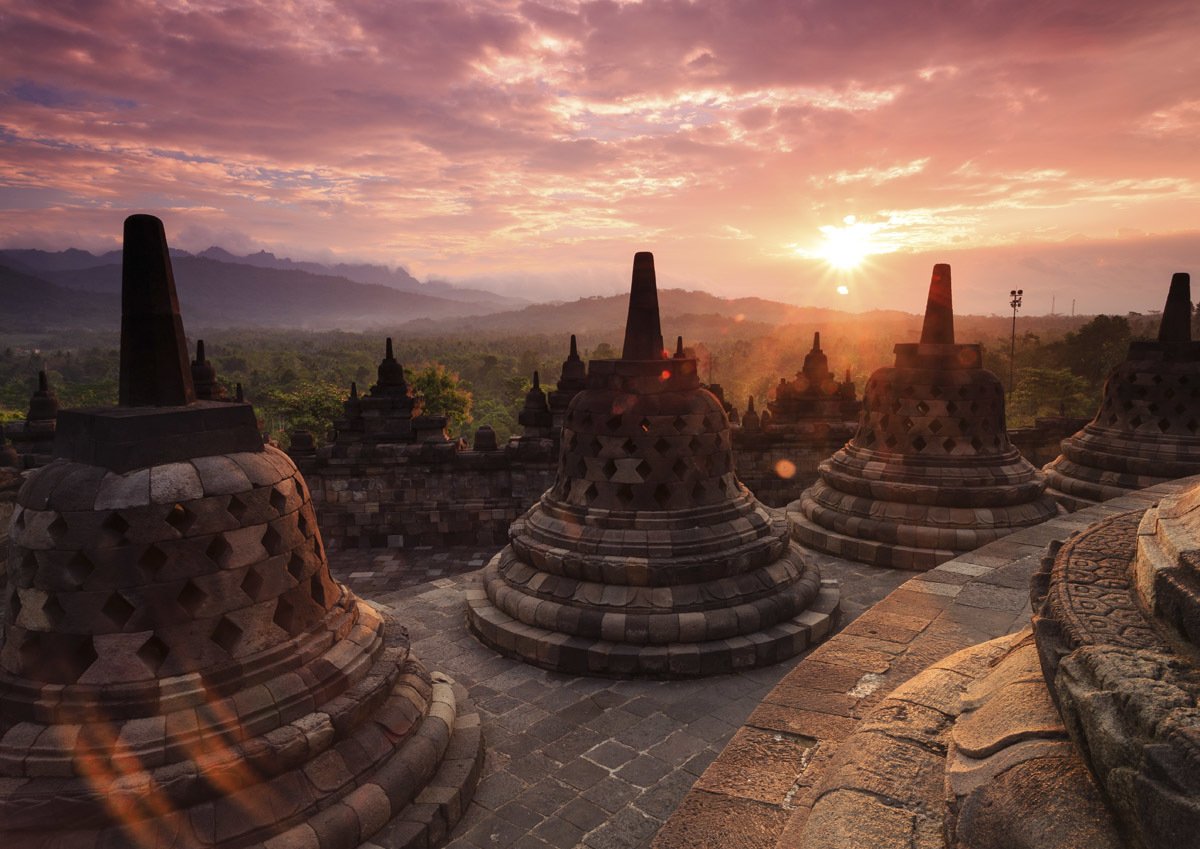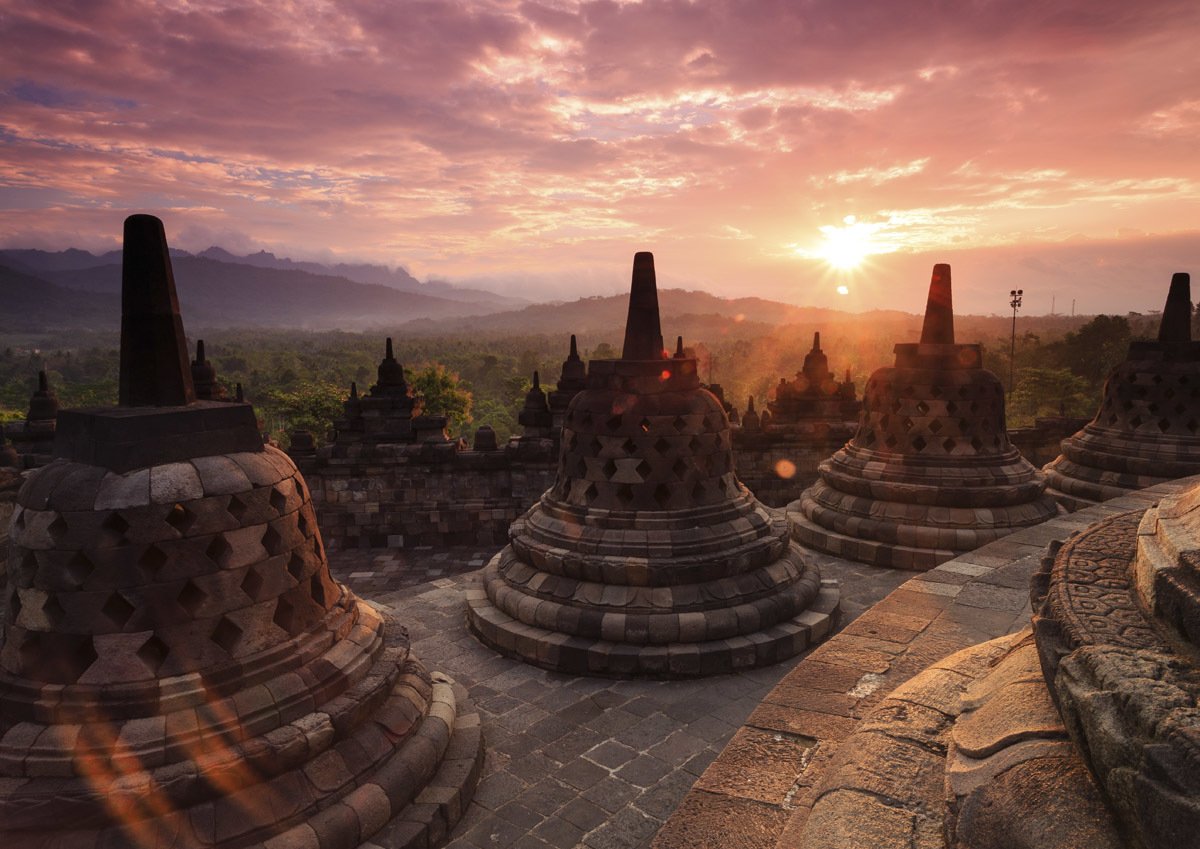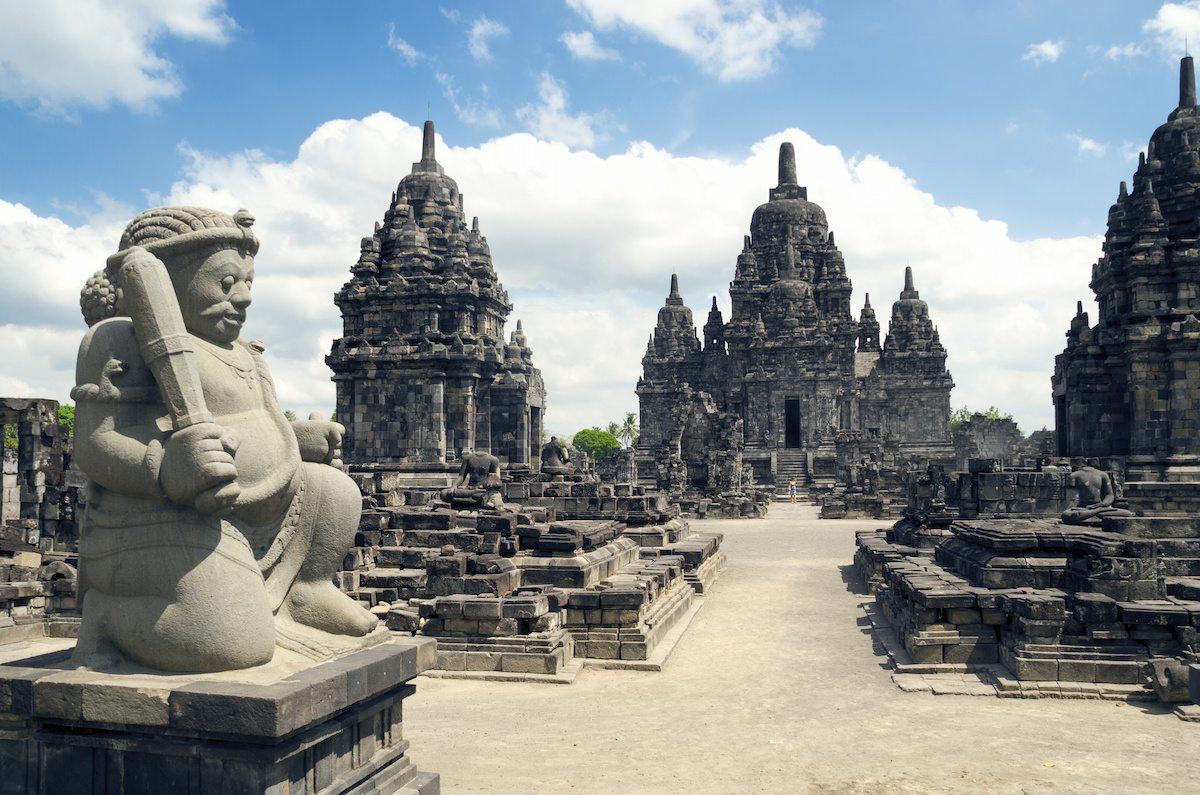
Yogyakarta, or simply Yogya, is more than just a city in Indonesia; it’s a vibrant cultural heart, a repository of history, and a living testament to the enduring traditions of Java. From ancient temples that whisper tales of forgotten kingdoms to bustling markets overflowing with batik and silver, Yogyakarta offers an immersive and unforgettable travel experience. This guide will walk you through the best of Yogya, covering its top attractions, rich history, practical travel tips, diverse accommodation options, transportation, and the optimal time to visit, ensuring you make the most of your trip to this captivating city.
A Glimpse into History: Yogyakarta’s Royal Legacy
Yogyakarta’s historical significance is deeply intertwined with the Yogyakarta Sultanate, the only remaining monarchy officially recognized within Indonesia. Founded in 1755 following a treaty with the Dutch East India Company, the Sultanate has played a crucial role in preserving Javanese culture and resisting colonial rule.

Related Articles about Yogyakarta: The Soul of Java – A Complete Guide:
- Canada: A Land of Infinite Horizons and Unforgettable Adventures
- India: A Traveler’s Guide to a Land of Infinite Wonders
- Milan: A Comprehensive Travel Guide for the Fashionable Explorer
- Slovenia: A Jewel Box of Emerald Dreams and Alpine Majesty
- Poland: A Tapestry of History, Culture, and Unforgettable Experiences
The city served as Indonesia’s capital during the Indonesian National Revolution from 1945 to 1949, solidifying its place as a symbol of national identity and resilience. This historical weight is palpable throughout the city, visible in its architecture, traditions, and the proud demeanor of its people. Exploring Yogyakarta is akin to stepping back in time, allowing you to connect with the rich tapestry of Indonesian history.
Top Attractions: A Journey Through Culture and History
Yogyakarta boasts a diverse array of attractions that cater to every interest, from history buffs and art enthusiasts to nature lovers and adventure seekers. Here are some must-visit destinations:
-
Kraton (Sultan’s Palace): The heart of Yogyakarta’s cultural and political life, the Kraton is a sprawling complex of pavilions, courtyards, and museums that offer a glimpse into the lives of the Sultans and the traditions of the royal court. Witness traditional ceremonies, admire the intricate architecture, and learn about the history of the Sultanate. Guided tours are highly recommended to fully appreciate the significance of each element.
-
Taman Sari (Water Castle): Located a short distance from the Kraton, Taman Sari is a former royal garden and bathing complex built in the mid-18th century. Explore its underground tunnels, secret mosques, and ornate bathing pools, imagining the opulent lives of the Sultan and his consorts. The architecture blends Javanese and European styles, creating a unique and fascinating historical site.

-
Borobudur Temple: Arguably the most iconic landmark in Indonesia, Borobudur is a magnificent 9th-century Mahayana Buddhist temple located about an hour’s drive from Yogyakarta. This UNESCO World Heritage Site is the largest Buddhist monument in the world, consisting of nine stacked platforms adorned with intricate reliefs and hundreds of Buddha statues. Witnessing the sunrise or sunset from the top of Borobudur is an unforgettable experience.
-
Prambanan Temple: Another UNESCO World Heritage Site, Prambanan is a stunning complex of Hindu temples dedicated to Shiva, Vishnu, and Brahma. Built in the 9th century, the towering spires of Prambanan are a testament to the architectural prowess of the ancient Javanese civilization. The Ramayana Ballet, performed against the backdrop of the illuminated temples, is a captivating cultural spectacle.
-
Mount Merapi: This active volcano, located north of Yogyakarta, offers breathtaking views and thrilling adventure opportunities. Hike to the viewpoints to witness the raw power of nature and learn about the volcano’s impact on the surrounding landscape. Jeep tours are a popular way to explore the area, taking you through lava fields and villages affected by past eruptions. Remember to check the volcano’s activity level before planning your visit.
-
Malioboro Street: Yogyakarta’s bustling commercial heart, Malioboro Street is a vibrant hub of activity where you can find everything from batik and handicrafts to street food and souvenirs. Haggle for the best prices, soak in the atmosphere, and sample the local delicacies. Be prepared for crowds, especially in the evenings.
-
Kotagede (Silver Village): Known for its intricate silverwork, Kotagede is a charming neighborhood where you can witness traditional silver crafting techniques and purchase unique jewelry and decorative items. Explore the narrow alleyways, visit the workshops, and learn about the history of silver making in Yogyakarta.
-
Ullen Sentalu Museum: Nestled in the cool highlands north of Yogyakarta, this museum offers a fascinating insight into the lives of the Javanese royal families. The museum showcases a collection of artifacts, photographs, and stories that reveal the rich history and traditions of the Mataram dynasty.
Beyond the Main Attractions: Hidden Gems and Local Experiences
While the main attractions are undoubtedly worth visiting, Yogyakarta also offers a wealth of hidden gems and local experiences that will enrich your journey:
-
Cave Tubing at Goa Pindul: Embark on an adventurous cave tubing experience at Goa Pindul, a subterranean river that flows through a stunning cave system. Float along the river, marvel at the stalactites and stalagmites, and enjoy the cool, refreshing water.
-
Parangtritis Beach: Located on the southern coast, Parangtritis Beach is a popular spot for sunset viewing and relaxation. Rent a horse-drawn carriage, fly a kite, or simply enjoy the refreshing sea breeze. Be aware of the strong currents and avoid swimming.
-
Imogiri Royal Cemetery: A sacred site where the Sultans of Yogyakarta and their families are buried, Imogiri offers a glimpse into Javanese royal traditions and beliefs. Dress respectfully and climb the steep stairs to reach the cemetery, where you can admire the ornate tombs and enjoy panoramic views.
-
Learn Batik Making: Immerse yourself in Javanese culture by taking a batik-making class. Learn the ancient techniques of waxing and dyeing fabric and create your own unique piece of art to take home as a souvenir.
-
Attend a Javanese Gamelan Performance: Experience the mesmerizing sounds of the Gamelan, a traditional Javanese orchestra composed of gongs, metallophones, and other percussion instruments. Attend a performance at the Kraton or a local cultural center.
Travel Tips for a Smooth and Enjoyable Trip
Planning is key to ensuring a smooth and enjoyable trip to Yogyakarta. Here are some essential travel tips:
-
Visa Requirements: Check visa requirements for Indonesia based on your nationality. Many nationalities can enter Indonesia visa-free for tourism purposes for a specified period.
-
Currency: The Indonesian Rupiah (IDR) is the official currency. ATMs are widely available in Yogyakarta, but it’s advisable to carry some cash, especially when visiting smaller villages or markets.
-
Language: Bahasa Indonesia is the official language. While English is spoken in tourist areas, learning a few basic Indonesian phrases will be greatly appreciated by locals.
-
Dress Code: Dress respectfully, especially when visiting religious sites. Cover your shoulders and knees when entering temples and mosques.
-
Bargaining: Bargaining is common in markets and for souvenirs. Be polite and respectful, and remember that a little goes a long way.
-
Transportation: Choose the best mode of transportation based on your needs and budget. Options include taxis, ride-hailing apps (GoJek, Grab), buses, and renting a motorcycle.
-
Health and Safety: Consult your doctor about necessary vaccinations and health precautions before your trip. Drink bottled water, avoid street food from questionable sources, and be aware of your surroundings.
-
Respect Local Customs: Be mindful of local customs and traditions. Avoid public displays of affection, remove your shoes before entering homes, and be respectful of religious practices.
Accommodation Options: From Budget-Friendly to Luxurious
Yogyakarta offers a wide range of accommodation options to suit every budget and preference:
-
Budget Hostels and Guesthouses: Numerous hostels and guesthouses offer affordable accommodation for backpackers and budget travelers. These often provide a social atmosphere and opportunities to meet other travelers.
-
Mid-Range Hotels: Yogyakarta has a plethora of mid-range hotels that offer comfortable rooms and amenities at reasonable prices. These hotels are often located in convenient locations near the city’s main attractions.
-
Boutique Hotels: For a more unique and stylish experience, consider staying at one of Yogyakarta’s boutique hotels. These hotels often feature distinctive designs, personalized service, and a more intimate atmosphere.
-
Luxury Resorts and Villas: Indulge in a luxurious stay at one of Yogyakarta’s upscale resorts and villas. These properties offer world-class amenities, stunning views, and impeccable service.
Transportation: Getting Around Yogyakarta
Navigating Yogyakarta is relatively easy, thanks to a variety of transportation options:
-
Taxis: Taxis are readily available, but make sure the meter is running or agree on a fare before starting your journey.
-
Ride-Hailing Apps (GoJek, Grab): Ride-hailing apps like GoJek and Grab are a convenient and affordable way to get around Yogyakarta. They offer motorcycle taxis (ojek) and car services.
-
Buses: The Trans Jogja bus system is an efficient and affordable way to travel around the city.
-
Becaks (Trishaws): Becaks are a traditional form of transportation that can be a fun and scenic way to explore the city center. Negotiate the fare before hopping on.
-
Motorcycle Rental: Renting a motorcycle is a popular option for independent travelers, but be sure to have a valid driver’s license and wear a helmet.
Best Time to Visit: Weather and Festivities
The best time to visit Yogyakarta is during the dry season, which runs from May to September. The weather is generally sunny and pleasant, making it ideal for exploring the city and its surrounding attractions.
The shoulder seasons, April and October, can also be good options, offering fewer crowds and slightly lower prices.
Avoid visiting during the rainy season, which runs from November to March, as heavy rainfall can disrupt your travel plans.
Consider visiting during one of Yogyakarta’s many festivals, such as Sekaten (a traditional Javanese fair held to celebrate the Prophet Muhammad’s birthday) or the Yogyakarta Arts Festival.
Conclusion: Yogyakarta, A Timeless Destination
Yogyakarta is a captivating city that offers a unique blend of history, culture, and natural beauty. From its ancient temples and royal palaces to its bustling markets and stunning landscapes, Yogyakarta has something to offer every traveler. By following the tips and information in this guide, you can plan a memorable and enriching trip to this remarkable corner of Java. So, pack your bags, embrace the warmth of the Javanese people, and prepare to be enchanted by the soul of Yogyakarta.





